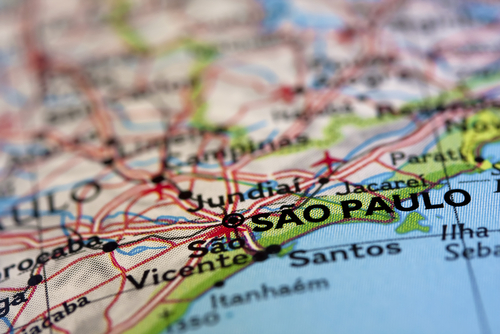Key Facts
SWOT: Sao Paulo
STRENGTHS
[row][double_paragraph]Global destination:
São Paulo is the largest business centre in Latin America and features numerous culture, fashion and entertainment attractions year round.[/double_paragraph]
[double_paragraph]Geographic location:
Its strategic location in Latin America and numerous air links with North America and the rest of the world make São Paulo an easily accessible destination.[/double_paragraph] [/row]
WEAKNESSSES
[row][double_paragraph]Security:
As with any major urban city centre, São Paulo has a high incidence of crime and violence. This scares tourists away and negatively impacts local travel and tourism activity.[/double_paragraph]
[double_paragraph]Expensive destination:
The 2012 UBS Prices and Earnings Report placed São Paulo as the second most expensive destination in Latin America, after Caracas.[/double_paragraph] [/row]
OPPORTUNITIES
[row][double_paragraph]LGBT tourism:
Beijing aims to become a low-carbon city, but the first step should be to reduce traffic congestion and industrial waste to clean up the city and improve air quality.[/double_paragraph]
[double_paragraph]Leisure destination:
The continuous promotion of São Paulo as a leisure and entertainment destination in Brazil is key to further enhancing arrivals for this segment each year.[/double_paragraph] [/row]
THREATS
[row][double_paragraph]European arrivals:
Tourism flows from key source markets in Europe are expected to record a decline, mainly due to economic instability in the region.[/double_paragraph]
[double_paragraph]Infrastructure:
The ability of the infrastructure projects in place in São Paulo to handle adequately the rising number of tourists expected to visit the city in the upcoming years remains a major concern.[/double_paragraph] [/row]
TOURISM FLOWS
Tourism flows on the rise
- A total of 12.6 million tourists visited São Paulo in 2012, up 3% compared to 2011.
- Domestic arrivals accounted for the bulk of visitors, recording a total of 10.7 million in 2012.
- In 2012, São Paulo welcomed around 1.9 million international tourists, up from 1.7 million in 2011. The recovery of the US economy was an important factor in the stronger results, as the country remains a major source market for tourists to São Paulo.
- Even though São Paulo lacks the traditional beach and sun package, it has turned into a popular leisure destination in Brazil thanks to its diverse cultural scene.
São Paulo successfully positions itself as a leisure destination
- Known as the hub for business and events in Brazil, São Paulo has managed to reposition itself as a popular leisure destination.
- More than being a key business destination, São Paulo is the capital of culture, fashion and entertainment.
- According to SPTuris, the tourist profile has changed since 2009, when only 9% of visitors came to São Paulo for leisure purposes.
- Now, over 30% of tourists who plan to spend more time in São Paulo do so for leisure purposes.
- In order to capitalise on this growth, city officials have introduced a number of attractions and events in the past years.
- The latest innovation is the launch of an official city tour in 2012, which will make stops at nine main attractions – Luz, Market Hall, República, Pacaembu Stadium, Paulista Avenue, Ibirapuera, Liberdade, the College Courtyard and the Municipal Theatre.
ATTRACTIONS
2014 FIFA World Cup
- São Paulo is among the 12 cities selected to host soccer games during the 2014 FIFA World Cup.
- The city’s economic importance to Brazil coupled with a developed infrastructure were key factors favouring São Paulo over other Brazilian cities.
- It is estimated that the majority of the 1.6 million tourists that come to Brazil during the 2014 FIFA World Cup will pass through São Paulo either to watch games and do some sightseeing, or simply to reach other Brazilian destinations.
- This will be augmented, given the city was selected to host the opening game. Overall, São Paulo lags far behind when it comes to infrastructure work, compared to other city destinations.
- Despite having completed all main infrastructure projects planned for its main airports, both Guarulhos and Congonhas continue to operate overcapacity and construction is still behind on the main stadium.
- This coupled with the rising number of protests that are taking place in the city are likely to negatively impact tourism flows in the short to medium term.
World Cup champion
- US$5 billion in tourism receipts expected for São Paulo in 2014, according to government authorities.
- Enhanced global exposure for the city and its tourist attractions.
- Further consolidation of its competitive positioning as a host of large international events in Brazil and abroad.
- Improved transport and hotel infrastructure and greater professionalisation of tourism.
Disqualified
- Security is a key concern, given the high incidences of crime and protests in the city.
- Traffic congestion a likely problem as the new stadium being built to host the opening game is located far away from the city centre.
Click here to “view full report”
